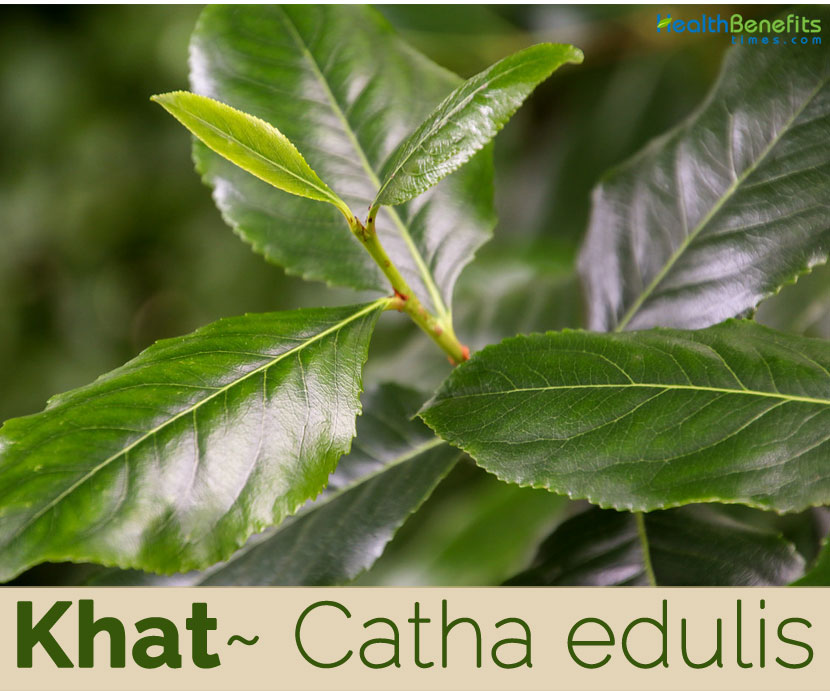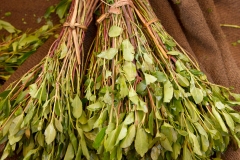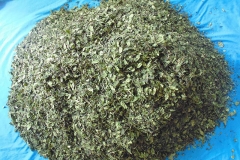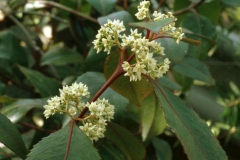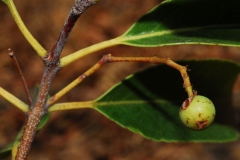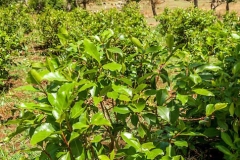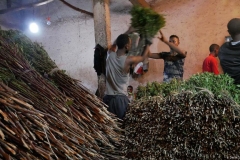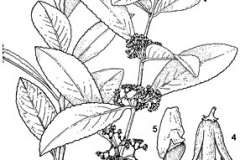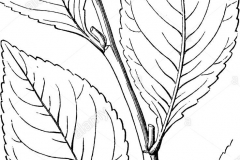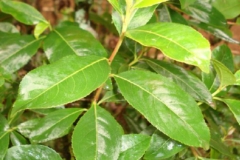| Khat Quick Facts | |
|---|---|
| Name: | Khat |
| Scientific Name: | Catha edulis |
| Origin | East Africa and the southern Arabian Peninsula |
| Colors | Initially green turning to red to brown |
| Shapes | Narrowly oblong, trigonous, pendulous three-valved capsule which contains one to three seeds |
| Taste | Astringent and slightly sweet |
| Health benefits | Beneficial for fatigue, depression, obesity, improve memory, influenza, alleviate pain, gonorrhea, increase aggression, veneral disease, asthma, colds, fevers, coughs, headaches |
| Name | Khat |
|---|---|
| Scientific Name | Catha edulis |
| Native | East Africa and the southern Arabian Peninsula. It has been cultivated and used for centuries in Yemen, Somalia, Madagascar, Kenya and Ethiopia and is grown and used to a lesser extent in Uganda, Tanzania, Rwanda, Zimbabwe, Zaire, Angola, Malawi, Mozambique, Zambia, Swaziland and South Africa |
| Common Names | Abyssinian tea, Chaat, Chat, Gat, Gomba, Jaad, Jimma, Kaht, Kat, Khat, Kijiti, Kus es Salahin, Miraa, Qaad, Qat, Qaat, Qut, sTchaad, Tchat, Tea of the Arabs, Tohai, Tohat, Tschut, Veve |
| Name in Other Languages | Afrikaans: Khat, Boesmanstee, Boesmantee Albanian: Khat Amharic: Sh’ati (ጫት) Arabic: Alqatu (القات), qat (قات) Armenian: Khat (խաթ) Azerbaijani: Khat Bengali: Khát Bulgarian: Khat (кхат) Burmese: khat (خط) chinese: Kǎtè (卡特) Croatian: Khat Czech: khat, kata jedlá Danish: Khat Dutch: Khat, Qat English: Khat, Arabian-tea, Miraa Esperanto: Khat, Ĉato Estonian: Khat, Katapõõsas Filipino: Khat Finnish: Khat, Katpensas, Khatpensas French: Khat Galician: Qat Georgian: Khat (ხატ) German: Khat, Katstrauch, Arabischer Tee, Abessiniertee, arabischer Kathstrauch Greek: Chat (χατ) Gujarati: Khāṭa (ખાટ) Hausa: Cin abinci Hebrew: Khat, קאת Hindi: Khat (खत) Hungarian: Khat, kat Icelandic: Khat Indonesian: Khat, Qat Irish: Khat, cait Italian: Khat, cat, ciat Japanese: Chatto (チャット) Javanese: Khat Kannada: Khāṭ (ಖಾಟ್) Kazakh: қ Kinyarwanda: Ingamwa, Muheshe, Nembo, Nembwe, Umusongati Korean: Kateu (카트) Kurdish: Khat Lao: Khat-خط Latin: Khat Latvian: Khat, Katas koks Lithuanian: Khatas, Arabinis dusūnas Macedonian: Kat (кат) Malagasy: Katy malay: Khat Malayalam: Khāṟṟ (ഖാറ്റ്) Maltese: Khat Marathi: Khat (खट) Mongolian: Khan (хан) Nepali: Khat (खट) Norwegian: Khat Oriya: Khata (ଖତ) Pashto: خټ Persian: خات, قات Polish: Khat, Czuwaliczka jadalna Portuguese: Khat, cafa, cata, cate, cha-da-Arabia Punjabi: Khaṭa (ਖੱਟ) Pushto: قات Romanian: Khat Russian: Kata (ката), Кат Serbian: Khat (кхат) Sindhi: Kẖt (خت) Sinhala: Khāṭ (ඛාට්), kat (කාට්) Slovenian: Khat Somali: Jaad Spanish: Khat, Té de Arabia, cat, miraa, tschat, kat, Sudanese: Khat Swahili: Miraa Swedish: Khat, kat Tajik: Xaet (хает) Tamil: Kāṭ (காட்) Telugu: Khāṭ (ఖాట్) Thai: Khād (คาด), Khạt (คัต) Turkish: Khat, Gat Ukrainian: Xat (хат) Urdu: کھٹ, قات Uzbek: Khat Vietnamese: Khat Welsh: Khat Zulu: Khat |
| Plant Growth Habit | Tall, erect, glabrous, slow-growing evergreen shrub or tree |
| Growing Climates | Evergreen sub montane or medium altitude forest, usually near the margins, or in woodland often on rocky hills |
| Soil | Wide range of moderately acid to alkaline soils, from sandy loams to heavy clays, sufficiently deep and well drained, with a high organic matter content in the topsoil. It is not salt tolerant |
| Plant Size | 1–5 m (3 ft. 3 in–16 ft. 5 in). However, it can reach heights of up to 10 m (33 ft.) in equatorial areas |
| Bark | Thin, smooth and pale grey-green in cultivated plants, rough on large trees |
| Branches | Terete, pale to brownish-grey; young twigs usually flattened, dull green to brownish-red |
| Leaf | Oblong to elliptic or obovate shaped evergreen leaves are between 5–10 cm (2–4 in) long and 1–4 cm (0.39–1.6 in) broad. Young leaves are a reddish-green, later turning to yellowish-green |
| Flowering season | July–September |
| Flower | The shrub’s flowers are produced on short axillary cymes that are 4–8 cm (1.6–3.1 in) in length. Each flower is small, with five white petals |
| Fruit Shape & Size | Narrowly oblong, trigonous, pendulous three-valved capsule which contains one to three seeds |
| Fruit Color | Initially green turning to red to brown |
| Propagation | From cuttings |
| Flavor/Aroma | Faintly aromatic |
| Seed | Obovoid, flat on one side, 3–3.5 mm long and 1.5 mm wide, with a large membranous wing 5–5.5 mm × 2.5–3 mm |
| Taste | Astringent and slightly sweet |
| Plant Parts Used | Leaves, twigs |
Fruit
Fertile flowers are followed by narrowly oblong, trigonous, pendulous three-valved capsule which contains one to three seeds. They are about 6–12 mm long and are initially green turning to red to brown as they mature. Seeds are obovoid, flat on one side, 3–3.5 mm long and 1.5 mm wide, with a large membranous wing 5–5.5 mm × 2.5–3 mm. Testa is dark-brown, rugose-papillose; embryo with two long, thin cotyledons and small plumule embedded in the endosperm.
History
Khat is indigenous to the evergreen montane forests in eastern Africa, from Eritrea south to South Africa (Cape Province) and Swaziland. The primary center of origin is assumed to be in the south-western highlands of Ethiopia. According to 14th century Arabic chroniclers, khat was cultivated extensively in the mountains of Yemen and also near Harar in Ethiopia at that time. It may have been introduced into Yemen from Ethiopia in the 6th century AD, some 600 years earlier than coffee (Coffea arabica L.), but was not known to the West until the end of the 18th century. Its regular use as a stimulant is confined largely to Muslim communities of southern Arabia and eastern Africa. Yemen, Ethiopia and Kenya are the main khat growing countries, but it is also collected from the wild or cultivated in several other eastern and southern African countries and in Madagascar.
Traditional uses and benefits of Khat
- Khat leaves are chewed mainly for their psycho-stimulant and euphoric effects.
- It has traditionally been used to elevate mood and combat fatigue.
- Khat is also supposed to have anti-obesity effects due to appetite suppression.
- Khat leaves have been used in traditional medicine for the treatment of depression and fatigue.
- Khat is also traditionally supposed to have a role in obesity due to its appetite suppressant effects.
- It has been used to improve memory and alleviate pain.
- Khat consists of the alkaloid cathinone, a stimulant, which is said to cause excitement, loss of appetite, and euphoria.
- Its fresh leaves and tops are chewed or, less frequently, dried and consumed as tea, to achieve a state of euphoria and stimulation.
- In traditional African and Arabic medicine the leaves and roots of khat are considered a panacea against all sorts of ailments and diseases.
- It is also used to lower the need for food and sleep, decrease sexual desires, and increase aggression.
- Khat chewing is an age-old habit in rural areas to alleviate fatigue during fieldwork or to enliven religious and family gatherings.
- Khat is used in indigenous medical systems for ailments such as venereal disease, asthma and other lung conditions, colds, fevers, coughs and headaches.
- It is used to prevent pest and malaria epidemics.
- It is beneficial for minor ailments such as headaches, colds, body pains, fevers, arthritis, as well as depression.
- In Ethiopia, khat advocates claim that the plant eases symptoms of diabetes, asthma, and intestinal tract disorders.
- Processed leaves and roots are used to treat influenza, cough, other respiratory ailments, and gonorrhea.
Culinary Uses
- Fresh young leaves, and sometimes the tender shoot tips, are chewed for their stimulating and mildly intoxicating effects.
- Larger leaves that are too hard for chewing and leaves that have lost their freshness may be dried and pulverized for the preparation of a paste with water, sugar or honey and sometimes also spices.
- The paste is chewed and swallowed in a similar manner to the fresh leaves.
- Dried leaves are also used to prepare an infusion in the same way as tea in South Africa.
- They may be smoked liked tobacco in Arabic countries.
Other Facts
- Freshly harvested khat has traditionally been wrapped in banana leaves to keep it moist during export to neighboring African countries.
- In Scotland, khat has been blended and filtered to be served as a drink called “Herbal Ecstasy.
- Wood of large trees is golden-yellow to brown, lustrous, straight grained, fine and even in texture, strong and moderately hard.
- Wood pulp makes excellent blotting paper.
- The first harvesting of chewable leaves is usually after the third or fourth year; although it usually requires another 6–7 years for the tree to fully mature.
- Khat can be purchased in the United States in various ethnic bars, restaurants, grocery stores, and smoke shops.
Precautions
- Khat may cause oral and gastric cancer, cerebral hemorrhage, severe headache, myocardial infarction (MI), duodenal ulcers, hypertension, low-birth-weight infants, and a variety of other severe effects, including addiction and associated sequelae.
- The use of khat results in constipation.
- Long-term use can precipitate permanent tooth darkening (of a greenish tinge), susceptibility to ulcers, and diminished sex drive.
- Khat is an effective anorectic, causing loss of appetite.
- It may cause high blood pressure and Migraine.
- Long term use or abuse can cause insomnia, anorexia, gastric disorders, depression, liver damage and cardiac complications, including myocardial infarction.
- Manic and delusional behavior, violence, suicidal depression, hallucinations, paranoia and khat-induced psychosis have also been reported.
References:
https://www.itis.gov/servlet/SingleRpt/SingleRpt?search_topic=TSN&search_value=506067#null\
https://plants.usda.gov/core/profile?symbol=CAED7
https://en.wikipedia.org/wiki/Khat
https://npgsweb.ars-grin.gov/gringlobal/taxonomydetail.aspx?id=9606
https://gd.eppo.int/taxon/CAVED
http://www.flowersofindia.net/catalog/slides/Qaat.html
https://uses.plantnet-project.org/en/Catha_edulis_(PROTA)


